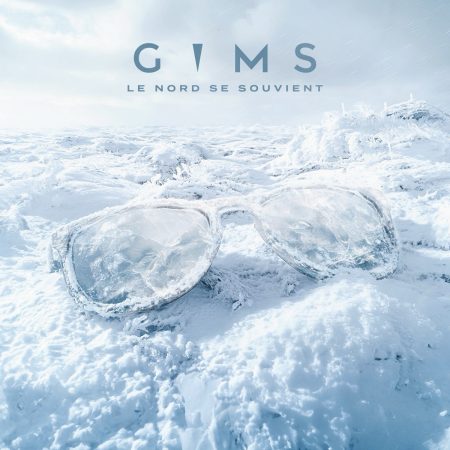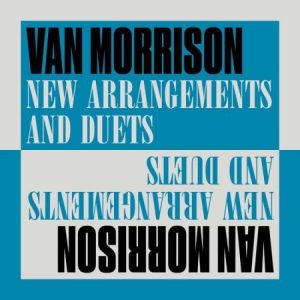Album review overview: Dog Eat Dog, Van Morrison and more
Dozens of new albums arrive at Maxazine’s editorial staff every week. There are way too many to listen to them all, let alone review them. It ensures that too many albums are left behind. And that’s a shame. That is why today we post an overview of albums that arrive at the editors in short reviews.
Dog Eat Dog – Walk With Me (reissue)
Dog Eat Dog’s “Walk With Me” from 2006 is a mixed bag of crossover rock. The band attempts to breathe new life into their well-known blend of punk, rock, and funk, but only partly succeeds. Now that the album has been reissued, the question is: Why? The opener “Showtime” kicks things off energetically, but it soon becomes clear that the band struggles to maintain consistency. Tracks like “Hell Yeah!” and “Undivided” sound dated as if the band is stuck in their 90s heyday, which is even further away now than it was in 2006. Familiar highlights remain, such as the title track “Walk With Me,” showcasing that Dog Eat Dog can still write catchy choruses. Opening with the saxophone we recognize from “Who’s the King,” this is one of the album’s few standout moments. Claus Grabke’s production is solid but sometimes lacks the punch expected from a rock album. Guest contributions, like Marta Jandová on “Undivided,” added little to the overall feel back then. Tracks like “M.I.L.F.” feel awkward and detract from the album’s more serious moments. “Walk With Me” is a nostalgic trip for long-time fans, but they’ve had the album for years. Dog Eat Dog seems torn between their old sound and the desire to stay relevant. Why is this reissue now? (Norman van den Wildenberg) (4/10) (Metalville)
Rio 18 – Radio Chévere
“Radio Chévere,” the new album by Rio 18, is a vibrant musical journey that transcends boundaries and genres. With guest performances by various artists, the band creates a colourful palette of styles, from samba to salsa and funk to cumbia. Guest host Coco Maria adds a unique radio show vibe, making the album more than just a collection of songs. There are plenty of highlights. “Oh Minha Querida,” a collaboration with Brazilian legends +2’s, is a touching samba ballad that strikes a chord. The funky “Maybe Man” with Silvia Machete is impossible to sit still to. Particularly notable is “Esa Tristeza,” where Nina Miranda’s (known from Smoke City and Da Lata) melancholic voice perfectly complements the Latin-inspired melody. “She’s in L.A.” with Young Gun Silver Fox is also a gem. The production is tight and polished but retains an organic warmth. Despite the many style changes, the album sounds coherent—a feat in itself. Critique? Some interludes could have been shorter. “Radio Chévere” is an ambitious and largely successful project that takes listeners on a captivating musical world journey. It’s a celebration of cultural diversity that feels both familiar and surprising. (Elodie Renard) (8/10) (Legere Recordings)
GIMS – Le Nord se Souvient
In the world of French rap and pop, GIMS remains an undeniable presence. With the release of his latest EP “Le Nord se souvient,” the artist invites listeners on a journey to his French roots. This seven-track collection is a mix of previously released singles and new tracks, with GIMS collaborating with artists like Dystinct and his brother Dadju. The EP opens promisingly with “Vent du nord,” setting the tone for a nostalgic expedition. GIMS’ attempt to explore different musical styles is commendable and suggests a desire for renewal. Yet, one might question whether this new release truly represents an evolution in GIMS’ musical journey. His signature vocal style, characterized by high volume and heavy use of autotune, remains dominant. For some listeners, this familiar sound might be reassuring, but for others, it could come across as tiresome, especially compared to his earlier, more groundbreaking work. Compared to albums like “Sublime” and “Mon Coeur avait raison,” which shook up the French music scene, “Le Nord se souvient” seems to take fewer risks. The floor-fillers that defined GIMS’ early career are less evident, raising the question of whether his tried-and-tested formula is losing its lustre. While he struggles to match his former glory, he clings to the sound and image that made him big. “Le Nord se souvient” is therefore more a confirmation of GIMS’ established status than a step forward in his artistic development. For new listeners, the EP offers few surprises, but for fans, it’s a comfortable return to familiar territory, tinged with nostalgia. It would benefit GIMS to reassess his roots with his old group Sexion d’Assaut. Rumours have circulated about the legendary group reuniting, which might have been a more commercially viable strategy. (Jan Vranken) (5/10) (Geante Rouge)
Daniel Herskedal – Call for Winter II: Resonance
Daniel Herskedal’s “Call for Winter II: Resonance” is a masterpiece straddling the lines between neoclassical and jazz. This album, scoring a well-deserved 9 out of 10, showcases Herskedal’s extraordinary ability to translate sensory perceptions into music. The title track, with its compelling rhythm and the interplay between the thundering tuba and subtle percussion, guides us through a dark Norwegian forest. The faintly screaming topline adds another dimension to this musical journey. “White Mountain Sunrise” exemplifies truly otherworldly beauty, making your airways feel naturally open. “My Child” stands out with its restrained loneliness. In a dry sound room, the listener almost feels inside the tuba. Herskedal’s music compels you to close your eyes; there’s nowhere else to go. This album proves the healing power of musical beauty. Herskedal’s rare talent for creating immersive soundscapes is fully realized, lifting the listener to another world. Without a doubt, “Call for Winter II: Resonance” is the most beautiful album of the year so far. It’s an enchanting journey that demonstrates how transcendent music can be. As if captured in a moment where time stands still – that’s how beautiful music can be. (Jan Vranken) (9/10) (Edition Records)
Van Morrison – New Arrangements and Duets
As the leaves fall, the first-holiday kitsch albums also start to drop. Van Morrison kicks things off with a duet album nobody asked for but everyone gets served. This musical Christmas gift is a mishmash of old recordings, new arrangements, and unlikely collaborations. Morrison seems to have forgotten his strengths and gets lost in a maze of misplaced duets. Highlights? They’re hard to find. The duet with Kurt Elling is the least annoying, but it’s downhill from there. Curtis Stigers’ contribution to “Close Enough for Jazz” assaults your ears, while the collaboration with Joss Stone painfully shows how far Morrison has strayed from his soulful roots. The “big band” arrangements are more mediocre than grand and do little to breathe new life into the dusty material. The only bright spot is the collaboration with Willie Nelson, but one swallow doesn’t make a summer. This album is a textbook example of an unnecessary release, solely meant to secure the record label’s holiday bonus. For true Van Morrison fans, this is a disappointment; for casual listeners, it’s an easily avoidable misstep. Save your money and your ears – this is a holiday gift best left untouched. (Elodie Renard) (3/10) (Exile Productions)










